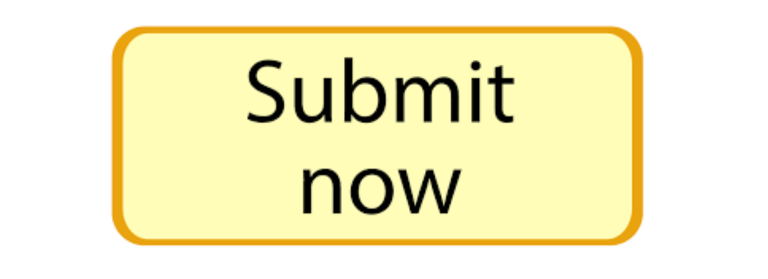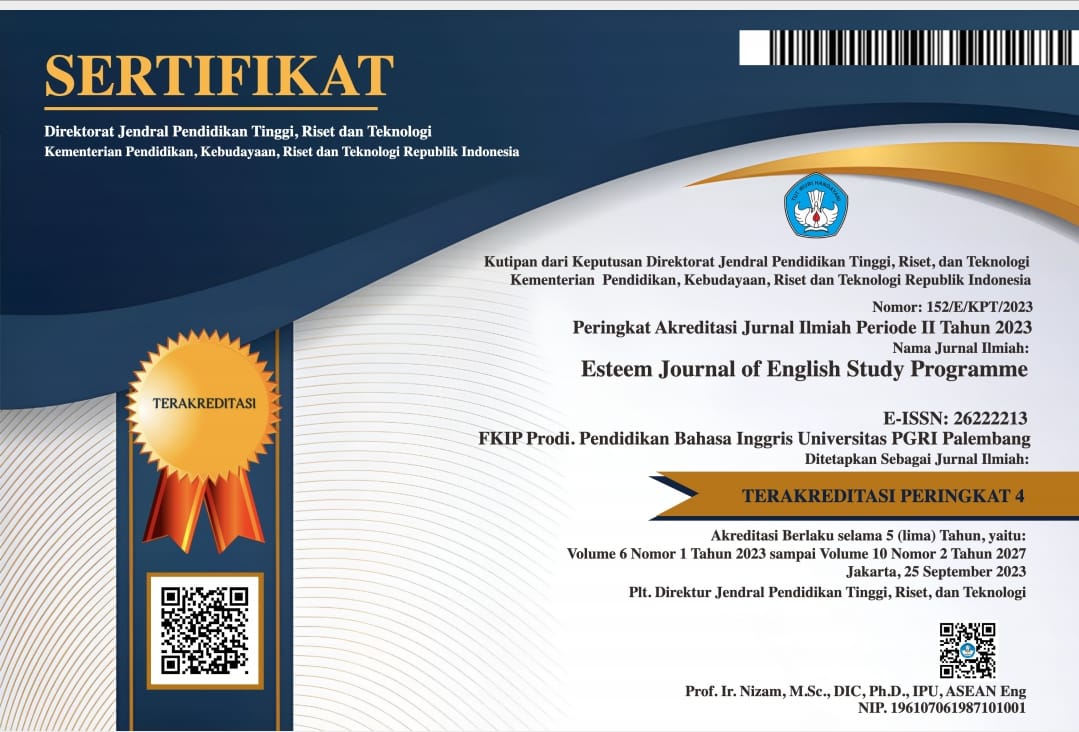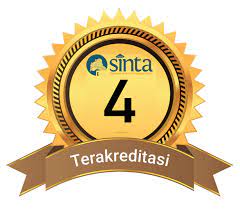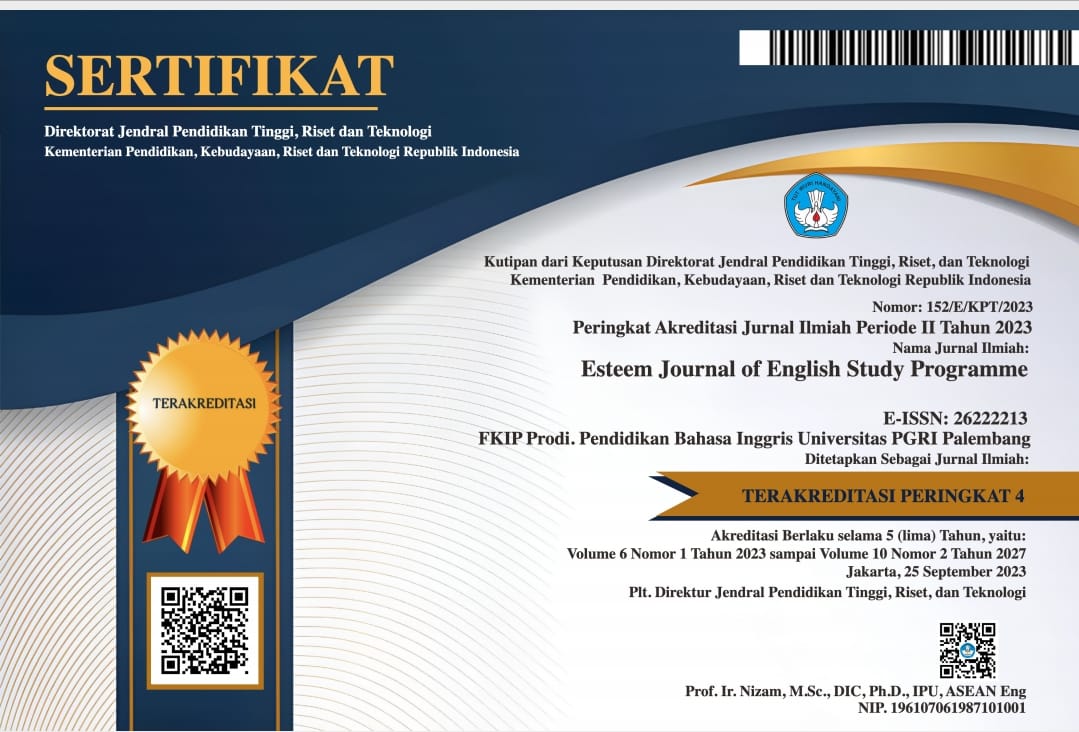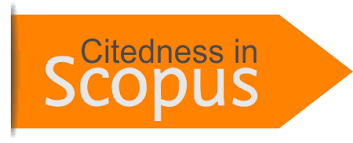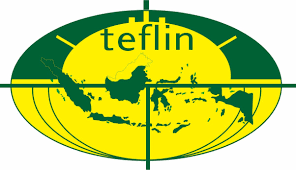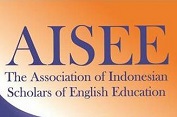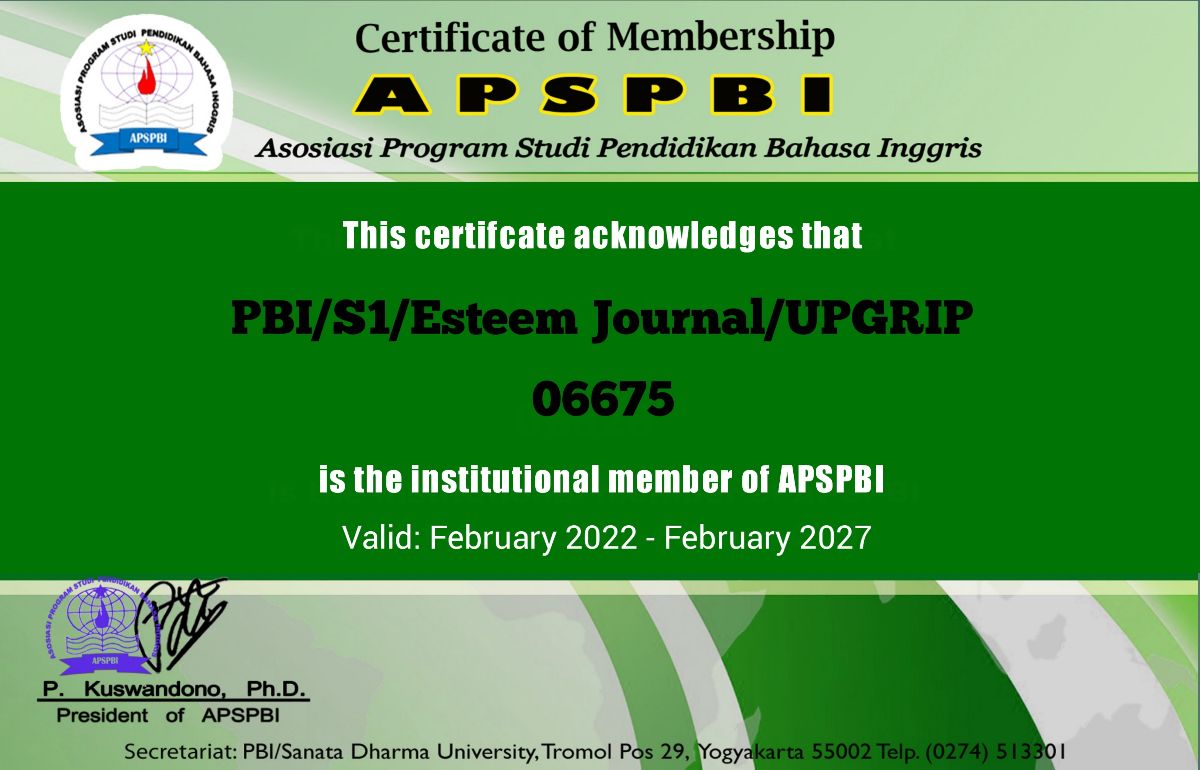IMPROVING STUDENTS' MOTIVATION AND SPEAKING ABILITY USING ONLINE MEDIA LEARNING
DOI:
https://doi.org/10.31851/esteem.v6i1.10214Keywords:
WhatsApp Application, Speaking, Motivation.Abstract
The objective of this study was to find out and analyze the process of improving students’ motivation and speaking ability of the third year students package C of SPNF SKB Kab,. OKU by using WhatsApp Application. The method which used in this research is classroom action research where the researcher works together with the collaborator/other English teacher. This research was carried out by following Kemmis & Taggart action research procedure where it took place in 3 cycles. The result of this study found that there was improvement of students' speaking ability and motivation. The score of minimum completeness criteria of English lesson was 70. Finding in cycle 1 there were 15 students who pass the minimum completeness criteria or 50 % of students. Finding test in cycle 2 there were 20 students who pass the minimum completeness criteria or 66% of students and than the finding in cycle 3 there were 26 students who pass the minimum completeness criteria or 86% of students. There were improvement of students speaking ability from cycle 1 to cycle 2 gained improvement as 16% and from cycle 2 to cycle 3 gained improvement as 20%. The students' participation increased during the teaching learning process whereas it indicates the students' motivation had increased. Utami (2020) have researched about WhatsApp Application in blended learning where she found that WhatsApp application effective to use as a learning media in writing descriptive text and now the researcher found that WhatsApp application can use as a learning media to improve students’ motivation and students' speaking ability.
References
Brown, H. D. (2004). Language Testing Book: Principles and Classroom Practice. Book, 314.
Dewey, J., & Cohen, M. R. (n.d.). EXPERIENCE & EDUCATION.
Cohen, L., Lawrence, M., & Keith M. (2007).Research Methods in Education. New York: Routledge Falmer.
Fraenkel, J. R.,& Norman E. W. (2012).How to Design and Evaluate Research in Education.(8th Ed).2015Boston: McGraw-Hill Higher Education.
Harmer, J. (2001). The Practice of English Language Teaching. New York. Longman.
Jaya, A., Mortini A., (2021)Visual Scaffolding and Intensive Reading Strategies Based on Gender. Esteem Journal
Kemmis, S., & Taggart, R. (1988).The action research planner.Victoria :Deakin University.
Krismony, N. P. A., Parmiti, D. P., & Japa, I. G. N. (2020). Pengembangan Instrumen Penilaian Untuk Mengukur Motivasi Belajar Siswa SD. Jurnal Ilmiah Pendidikan Profesi Guru, 3(2), 249. https://doi.org/10.23887/jippg.v3i2.28264
Muhson, A. (2010). Pengembangan Media Pembelajaran Berbasis Teknologi Informasi. Jurnal Pendidikan Akuntansi Indonesia, 8(2). https://doi.org/10.21831/jpai.v8i2.949
Simaibang, B. (2017). English Language Teaching in A Foreign Situation.
Sugiyono.(2013). MetodePenelitianKuantitatif, Kualitatif dan R&D. Bandung: Alfabeta.
Susilawati, S., &Supriyatno, T. (2020). Online learning through WhatsApp group in improving learning motivation in the era and post pandemic COVID-19. Jurnal Pendidikan: Teori, Penelitian, dan Pengembangan, 5(6), 852-859.
Utami, YuniRolita (2020). The Effect of Using Whatsapp in Blended Learning on Students’ Ability in Writing Descriptive Text (A Quasi Experimental Research at Student Tenth Grade of SMAN 5 KembangMumpo in Academic Year 2019/2020). http://repository.iainbengkulu.ac.id/4847/1/skripsi%20yuni%20full%20-lampiran.
Zakymedia.(2013).Definition of speaking skill. http://www.zakymedia.com/2013/06/definition-of-speaking-skill.html.
Downloads
Published
Issue
Section
License
Copyright (c) 2022 Ade Onema Septian, Baginda Simaibang, Mulyadi Mulyadi

This work is licensed under a Creative Commons Attribution-NonCommercial-ShareAlike 4.0 International License.
Copyright Notice
Authors who publish with this journal agree to the following terms:
In order to assure the highest standards for published articles, a peer review policy is applied. In pursue of the compliance with academic standards, all parties involved in the publishing process (the authors, the editors and the editorial board and the reviewers) agree to meet the responsibilities stated below in accordance to the Journal publication ethics and malpractice statement.
Duties of Authors:
- The author(s) warrant that the submitted article is an original work, which has not been previously published, and that they have obtained an agreement from any co-author(s) prior to the manuscript’s submission;
- The author(s) should not submit articles describing essentially the same research to more than one journal;
- The authors(s) make certain that the manuscript meets the terms of the Manuscript Submission Guideline regarding appropriate academic citation and that no copyright infringement occurs;
- The authors(s) should inform the editors about any conflict of interests and report any errors they subsequently, discover in their manuscript.
Duties of Editors and the Editorial Board:
- The editors, together with the editorial board, are responsible for deciding upon the publication or rejection of the submitted manuscripts based only on their originality, significance, and relevance to the domains of the journal;
- The editors evaluate the manuscripts compliance with academic criteria, the domains of the journal and the guidelines;
- The editors must at all times respect the confidentiality of any information pertaining to the submitted manuscripts;
- The editors assign the review of each manuscript to two reviewers chosen according to their domains of expertise. The editors must take into account any conflict of interest reported by the authors and the reviewers.
- The editors must ensure that the comments and recommendations of the reviewers are sent to the author(s) in due time and that the manuscripts are returned to the editors, who take the final decision to publish them or not.
Authors are permitted and encouraged to post online a pre-publication manuscript (but not the Publisher final formatted PDF version of the Work) in institutional repositories or on their Websites prior to and during the submission process, as it can lead to productive exchanges, as well as earlier and greater citation of published work (see The Effect of Open Access). Any such posting made before acceptance and publication of the Work shall be updated upon publication to include a reference to the Publisher-assigned DOI (Digital Object Identifier) and a link to the online abstract for the final published Work in the Journal.




